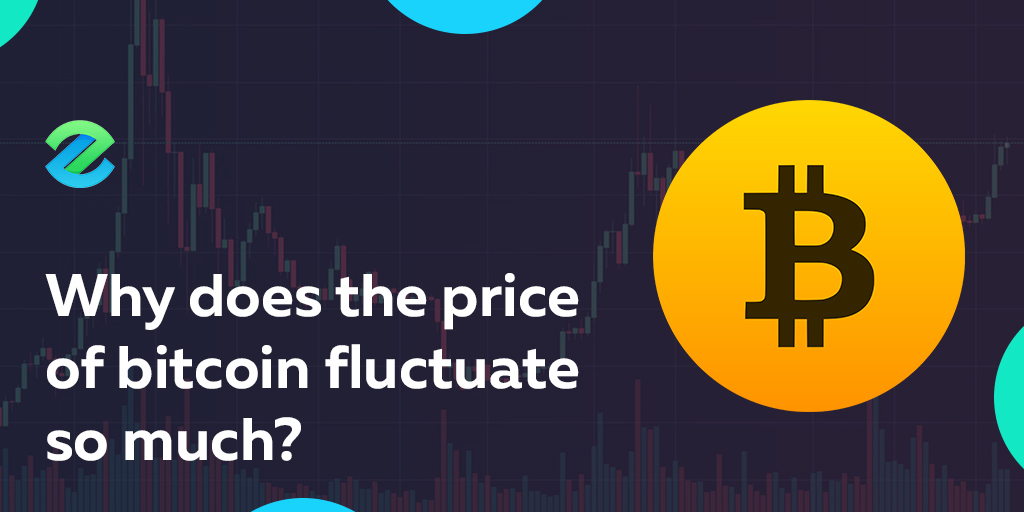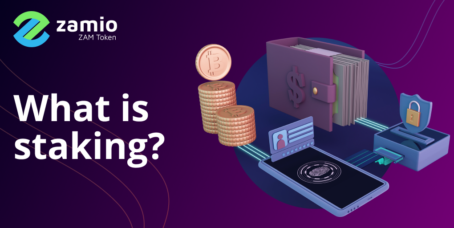Bitcoin has witnessed massive price fluctuation since its launch in 2009. This trend seems to continue up to the present day, and it is likely to continue in the future. In this article, we will discuss the factors that influence the price of bitcoin and contribute to its price volatility and fluctuation. The factors include but are not limited to:
- Supply and demand
- Speculation
- Scarcity
- Hype, greed, and fear
- News coverage, public figures, and influencers
- Politics and the legal environment
- Competition
- The big players
These factors could interrelate and influence each other. However, the number one factor that drives the price of bitcoin up and down is supply and demand. All the remaining factors influence supply and demand or the decision by the investor to buy or sell bitcoin. In turn, this affects the price movement of bitcoin accordingly. Let’s explore how.
Table of Contents
The law of supply and demand
The law of supply and demand is the most fundamental concept in economics. If the supply or demand increases or decreases for a particular good or service, the price increases or decreases accordingly. The relationship between supply, demand, and the price is outlined below:
- When demand increases, price increases, and when it decreases, price decreases.
- When supply increases, price decreases, and when it decreases, prices increase.
Let’s see how this applies to bitcoin. On the demand side, as more people use bitcoin as a medium of exchange, the more valuable it becomes. In this regard, bitcoin functions like any other fiat currency in terms of price appreciation and depreciation. When you buy bitcoin, you need to exchange it for a fiat currency, such as the dollar or euro. By selling your dollar, for example, to buy bitcoin, the demand for bitcoin hikes, and hence the price increases. When you sell bitcoin and cash dollars, the opposite occurs. In other words, when the bitcoin market has more buyers than sellers, the price of bitcoin goes up (more demand than supply). On the other hand, if sellers are more than buyers, supply will exceed demand, and prices plummet.
Similarly, when more businesses accept bitcoin as a payment, it encourages more people to own and use bitcoin and creates more demand. Bitcoin is easy, fast, safe, and almost costless when conducting a transaction, so more users will opt in to use it when more businesses embrace it. In addition, the legitimacy, credibility, and value of bitcoin increase as more companies accept it. Expedia and Walmart, and CheapAir, Coca-cola, Starbucks, Tesla, to name a few, are among several international companies that accept or accepted bitcoin as payment. All things being equal, expect the price of bitcoin to go up as more influential companies join the bitcoin network.
Note: companies may change their policy towards accepting bitcoin as payment. Always check recent updates.
Now let us look at some of the remaining factors and see how they impact the supply and demand for bitcoin.
Scarcity
Scarcity is also a fundamental concept in economics. When resources become scarce, they become more valuable. This concept applies to cryptocurrencies in general and bitcoin in particular. The amount of bitcoin available in the market is fixed and can never exceed 21 million coins. All things being equal, expect bitcoin to only rise in value as time passes and approaches its 21 million coin threshold in the year 2140. This is not a matter of speculation, it is a matter of economics.
On the other hand, the money supply of fiat currency, such as the dollar, can be expanded by printing more money whenever the authorities deem it appropriate. Hence, the currency could devalue as more money becomes available, but not always. The federal reserve sometimes expands the money supply to meet the demand of a growing economy and population. By doing so, the economy remains healthy and robust.
Bitcoin value cannot depreciate due to excessive money supply because technical protocols prevent this from happening. So when the bitcoin supply reaches its limit, it will remain constant, or as they say in economics, perfectly inelastic. So supply will not impact the value downwards. But when demand for owning bitcoin increases coupled with a fixed supply, the price will increase. Fighting to own a piece of anything scarce inflates prices.
Hype, greed, and fear
If you have been following the bitcoin market, you will probably recall the hype of 2013/2014 and 2021/2022. Get rich quick and do not miss an opportunity of a lifetime are common sayings surrounding bitcoin investment. The rush to buy bitcoin by unprecedented numbers of newcomers in a given period forces the prices to go up. The greed of gaining high returns in a short period of time and the fear of price drops lead to price fluctuation. When you buy bitcoin or any other assets next time, remember this quote from Warren Buffett: be fearful when others are greedy and be greedy when others are fearful (goodreads.com).
Speculation
Speculation is buying and selling assets such as stocks and currency in the short term, often buying and selling on the same day to obtain quick returns. This trading strategy contributes to price drops and hikes, and it is more common than you think. Benjamin Graham once said speculators work for their brokers, and investors work for themselves (the Intelligent Investor, Revised, 2006).
Media coverage, public figures, and influencers
Negative or positive press about bitcoin causes prices to fluctuate drastically. When the good news comes, the investor rushes to buy bitcoin and the price rises, and when bad news comes, fear dominates the investor and forces him to sell. Furthermore, when a famous and influential person in the tech industry like John Macfee appears on TV or YouTube or writes a tweet in favor of a particular cryptocurrency, his followers rush to buy this currency, driving its price to the roof.
Additionally, many influencers on social media, such as Facebook and YouTube, broadcast their opinions and predictions about the price of bitcoin in the future. Some predict bitcoin to reach one hundred thousand dollars by the end of the X year, and others expect the price to climb to one million dollars in X number of years! Followers get carried away by these unrealistic expectations, and in doing so, they inflate the price of bitcoin and help it reach new unprecedented levels out of nothing. When the hype ends, prices collapse again.
We probably all recall the announcement of Elon Musk in February 2021 about his company, Tesla, accepting bitcoin as payment. After the announcement, the price of bitcoin jumped from $46,462 in February to $58,742 in March (Statista 2021). On May 12, Musk announced that his company no longer accepts bitcoin as payment, citing environmental concerns. Guess what happened, prices plummeted. The bitcoin community yearns for legitimacy because the future of bitcoin is ambiguous, and the obstacles in front of it are plenty, so expect the prices to go on a wild roller coaster for a while as new information comes about.
Competition
With more than 5,000 tokens available in the crypto market, the options are limitless. When people exchange bitcoin for other cryptocurrencies, the price of bitcoin decreases, and the opposite is true. Among Bitcoin’s biggest competitors are Ethereum, Tether, and Ripple, but they are still far from Bitcoin’s market cap.
The big players
The big players who own large shares of bitcoin can influence the direction of the price. The same also applies to the big players of stocks. Wall Street is known to manipulate the prices of stocks through its hedge and mutual funds. These funds hold a large number of stocks in a particular company. The manager of the fund could artificially increase or decrease the price to his fund’s advantage. A recent example of this is GameStop. The big players of Wallstreet thought they were manipulating the market price of GameStop. But they were manipulated by a group of small players for the first time in the history of Wallstreet (Cool story, read it here).
This type of activity also happens with bitcoin. We could never know the identity of the individuals or groups who engage in manipulation. But the number of bitcoins traded and digital addresses the coins moved from and the addresses they settled in are posted on the public ledger of the blockchain.
Politics and the legal environment
Bitcoin is a digital currency that has no borders or central authority or intermediaries. As a result, some governments have banned the use of bitcoin, such as China and India. With this information, bitcoin demand decreases from those countries, which negatively impacts scalability, and therefore the price.
But bitcoin is legal and regulated in the United States, Canada, Germany, and many other western countries. Yet other governments, such as Russia, Venezuela, and Iran, use bitcoin to avoid international sanctions. As more governments ban or embrace bitcoin, expect the prices to fluctuate quite wildly with these announcements. Fear and greed will kick in to capitalize on this information. I hope by now you see the links between all the factors that make bitcoin prices fluctuate.
Conclusion
Many factors determine the price of bitcoin but supply and demand are the central forces behind bitcoin price volatility.
The price of bitcoin does not reflect its value mainly due to the hype around it ignited by greed, euphoria, and unrealistic expectations. Bitcoin has made life easier for many and saved them time and money, and in a sense, people lost the true purpose of using it.
When all the madness subsides or at least lessens, and the investor begins to put his money in bitcoin because he appreciates its utility, only then will the price rise and fall naturally and logically.







